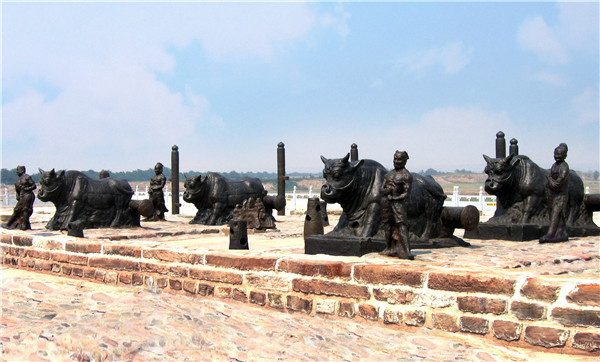
The Museum of Pujin Ferry Relics is the key cultural relic site under the state protection. From March 1988 to August 1989, iron works including grand iron ox, cast in the Kaiyuan period of Tang Dynasty (713 A.D.-741A.D.), were unearthed and kept open to the public by the Yongji County Museum, with the strong support of the county Party committee, the county government and the Provincial Bureau of Cultural Relics. From March to June 1991, Shanxi Provincial Bureau of Cultural Relics set up a joint archaeological team with experts from both local areas and other districts to excavate the site scientifically, showing the basic features of Pujin Ferry relics and uncovering the relationship among the strata of the site in Ming and Qing Dynasties, unearthed iron cultural relics and Pujin bridge. From September 1999 to April 2000, the iron ox went through “Lifting-up protection”, being lifted for 12.2 meters high in a vertical way from the exact original site, by the Bureau of Shanxi Archaeology. It took 6 years, costing more than 10 million RMB, and was completed in January 2005. The site restoration platform of 2268 square meters shows the historical features of the ancient ferry back in the history. In addition to iron ox, iron men, iron pillars and other iron cultural relics, there are also unearthed dams from Ming Dynasty and other cultural relics.
In 2008, Yuncheng Development and Construction Co., Ltd. invested heavily in digging out man-made lakes, making boats and canoes, constructing pontoon bridges and building two passes (Pujin Pass and Daqing Pass).
The whole scenic area is designed to include the entrance area, the relic site of the ferry, the recreated Tang pontoon bridge, the exhibition area of cultural relics, the recreational area, and the staff office, etc. The entrance area is set with two squares in and out to facilitate the visiting and leaving of tourists. The theme building recreates the gate in the Tang Dynasty, with the broad surface and magnificent aura, giving a glimpse of the flourishing Tang Dynasty. Through the gate, the old Yellow River road takes one to the relic site of the ferry. In the relic site of the ferry, the unearthed exhibit includes iron ox, iron men, iron pillars and other iron objects, as well as the dam in Ming Dynasty running through the north and south. Below the site platform is a digital multimedia exhibition hall, which enables tourists to understand the history of the ferry in a detailed way. The archaeological discoveries of the site provide valuable material resources for the study of ancient politics, economy, culture and military affairs in the perspective of bridge construction, smelting and casting, craftsmanship, changes in the Yellow River, hydrogeology and other disciplines.
The recreated Tang pontoon bridge area center on the bridge is 128 meters in length on the man-made lake which symbolizes the 1280-year history of the Yellow River iron ox. Two passes are set around the east and west bank of the lake, namely Pujin Pass and Daqing Pass. The recreational area encompasses the humanity landscapes such as the Yubei pavilion, the gallery pavilion, ecological landscape, flora, etc. reflecting a high degree of harmony between man and nature.
The site of Pujin Ferry is 18 kilometers southwest of Yongji City, Shanxi Province, outside the west gate of the ancient city Puzhou. In the east of the site is the Pujiu Temple, where the story of the classical opera “The Romance of West Chamber” begins. In the east of the site is the Stork Tower, the famous building in Chinese history and Chinese culture. Thus, the site is on the map of hot tourist tracks for exploring ancestral culture around the Yellow River.
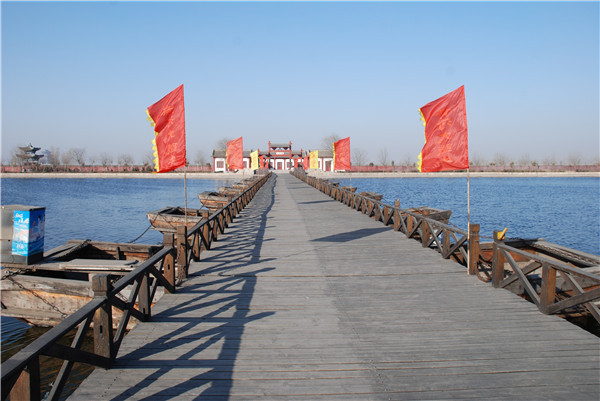
【Pontoon bridge anchors---Grand Iron Ox in the Kaiyuan Period of the Tang Dynasty】
Grand iron ox in the Kaiyuan period of Tang dynasty were unearthed in August 1989, in the north corner outside the west gate of Puzhou (now Yongji city). According to historical records, Li Longji, Emperor Xuanzong of the Tang Dynasty ordered to cast four iron ox to hold the pontoon bridge on both sides of the Yellow River around the west gate area of Puzhou in the 12th year of Kaiyuan period. Beside each iron bull stands one iron man and one iron mountains. The iron ox are massive and heavyweight in every sense. They outnumber others. The rare sophisticated craftsmanship is too advanced to find in the earliest history of China. Known as a national treasure, its miniature is now displayed in the Great Hall of the People. The discovery of iron ox is the invaluable asset in archaeology, providing the scientific basis for the study of politics, military affairs, economy and culture in the Tang dynasty in the perspective of bridge construction, smelting and casting, craftsmanship, and the changes of the Yellow River, etc.
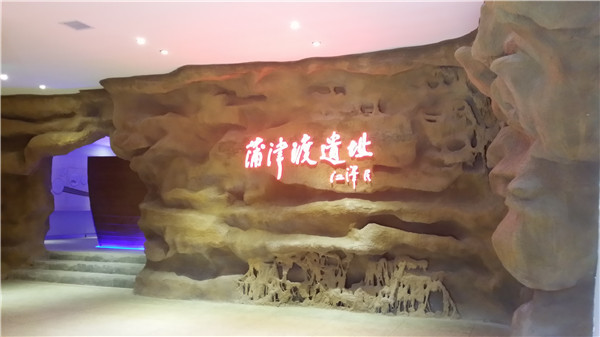
【The Exhibition Hall】
The exhibition hall of the Museum of Pujin Ferry Relics was rearranged in 2013, consisting of five functional exhibition areas, namely, Preface Hall (Historical Relic Exhibition Area), Iron Bull Exhibition Area, Millennium Puzhou Exhibition Area, Pontoon Bridge Exhibition Area and Cultural Protection Exhibition Area. The designing style of the exhibition hall is inspired by the shape of the “pontoon bridges” and the artistic conception of the Chinese ink painting. High-tech means such as acoustics and optoelectronics are adopted to unfold the prosperity of ancient Puzhou.
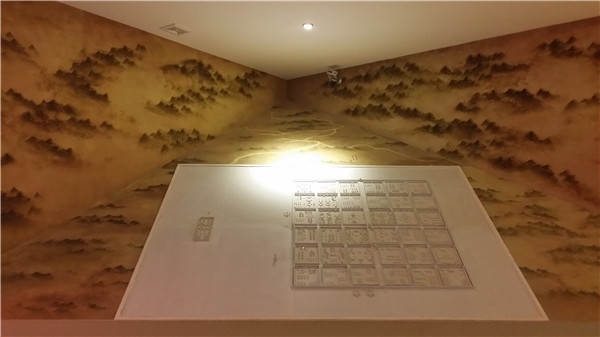
The first exhibition area: historical relics
Pujin Ferry is a famous Yellow River ferry in history, located outside the west gate of old Puzhou. It is the first link for the route to the heartland from the east and north roads along the Yellow River. Pujin Ferry is renowned for its world-famous Yellow River pontoon bridge. Pujin Ferry has always been a crucial sit connecting Qin and Jin districts. The history of building pontoon bridges in Pujin Ferry can be traced back to the Spring and Autumn Period, which is 2500 years ago.
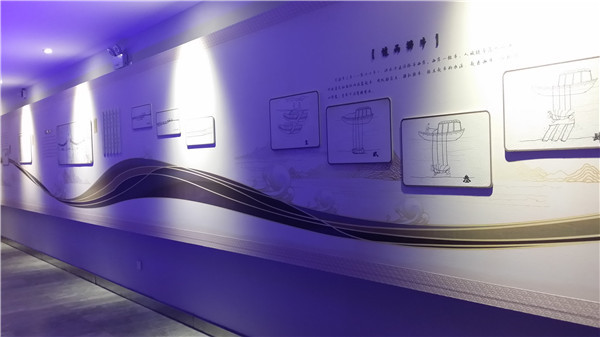
The second exhibition area: iron ox
In the Kaiyuan period of Tang dynasty, Puzhou city rose to one of the country's six first-tier cities. Its traffic role grew. The bridge of bamboo-connected boats in Pujin Ferry cannot meet the traffic needs of Puzhou. For this reason, the Tang government did all to rebuild the Yellow River pontoon bridge, with bamboo being replaced by iron, eight iron ox being cast on both sides as anchors, and facilities like iron mountains and iron men being cast, too. New Pujin Ferry pontoon bridge can find no match at that time, being a crucial site connecting Qin and Jin districts, with a large flow of traffic.
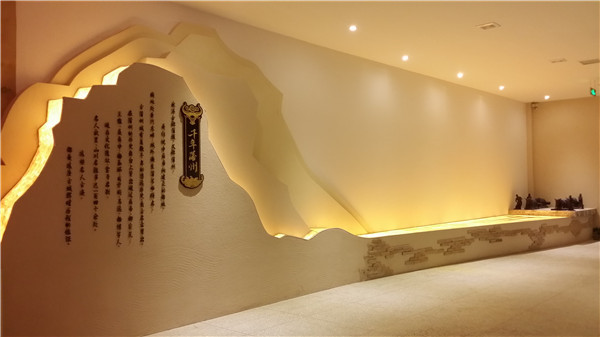
The third exhibition area: Millennium Puzhou
Yongji, known as Puzhou or Puban in ancient China, is the legendary capital established by Shun Emperor. It is located on the eastern bank of the Yellow River, where one kind of grass named Puwei densely populates there outside the city. Then, the city got its name Puzhou from the grass Puwei. The ancient city has a long history of thousands of years with a mounting number of celebrities such as Emperor Shun, Liu Zongyuan (poet), Wang Wei (poet), Nie Yizhong (poet), Yang Guifei (favorite concubine of emperor Minghuang), Sikong Tu (poet), Ma Yuan (painter), and Yang Bo (minister in Ming dynasty). Now, there are more than 140 tourist sites in Yongji including the cultural relics, temples, hometowns of celebrities, famous mountains and rivers, etc. These sites testify how glorious the ancient city was.
The twisted sandy Yellow River flows with the storm from the end of the world. The Yellow river runs from east to west of China, has given birth to the origin of Chinese civilization with an unchanging mind and momentum. Its origin is rooted in the Hedong region. 1.8 million years ago, the ancient Xi Hou people kindled the first civilization here. It is the source of lyre-playing, chess, calligraphy, painting and the fundamentals of life. Here, Emperor Yao, Shun and Yu successively built their capitals. The Yellow River has left an indescribable cultural mark in the Hedong region.
Yongji, situated on the east bank of the river, has been culturally tied to the Yellow River in a very close way. Puzhou was chosen as the capital in Emperor Shun’s reign because of its unique geographical location close to the mother river. Pujiu Temple, the Stork Tower and other places of interest are all related to the Yellow River and the iron ox in Pujin from the Kaiyuan period are the cultural treasure left over from the process of conquering and studying the Yellow River.
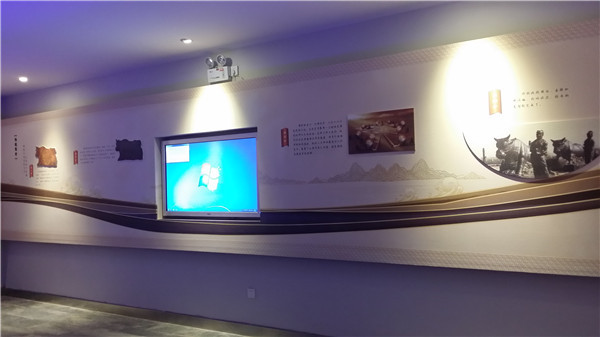
The fourth exhibition area: the pontoon bridge
Pontoon bridges are also known as boat bridges in ancient history. Boats being bridge piers, ropes connecting boats, anchors being used to fix the bridge and boards on boats, a pontoon bridge came into being. It is handy and time-efficient to build a pontoon bridge. That explains why it was always used for military purpose to the extent that it was called the war bridge. Despite the prominent advantages, the disadvantages are crystal clear. Its limited durability resulted from the washing of waves for a long time means constant repairing and replacement work.
In the Pujin Ferry, the river is narrow with a slow flow but the bank is high, which is perfect for building pontoon bridge. Naturally, the Yellow River pontoon bridges showed up here first and they kept being built in a frequent way, making this place a transportation hub between Qin and Jin. Pujin Ferry pontoon bridge has experienced several ups and downs in history because of the historical factors such as the change of Dynasties and the natural factors such as the change of the Yellow River.
Since its birth in the ancient Spring and Autumn Period, it has gone through five historical phases.
The years are like rivers, and the history is like ink. The Pujindu Great Floating Bridge has witnessed the vicissitudes and glory of history along with the rising tide of the Yellow River for thousands of years, leaving only the ancient cultural relics that have been washed for thousands of years and precipitated over the years today. Behind the cultural relics are the historical stories with deep and profound artistic conception like ink and wash painting. Standing on the ancient ferry of the Yellow River, imagining the grand scene of the Tang Dynasty, you will be full of thoughts of the thousand years.
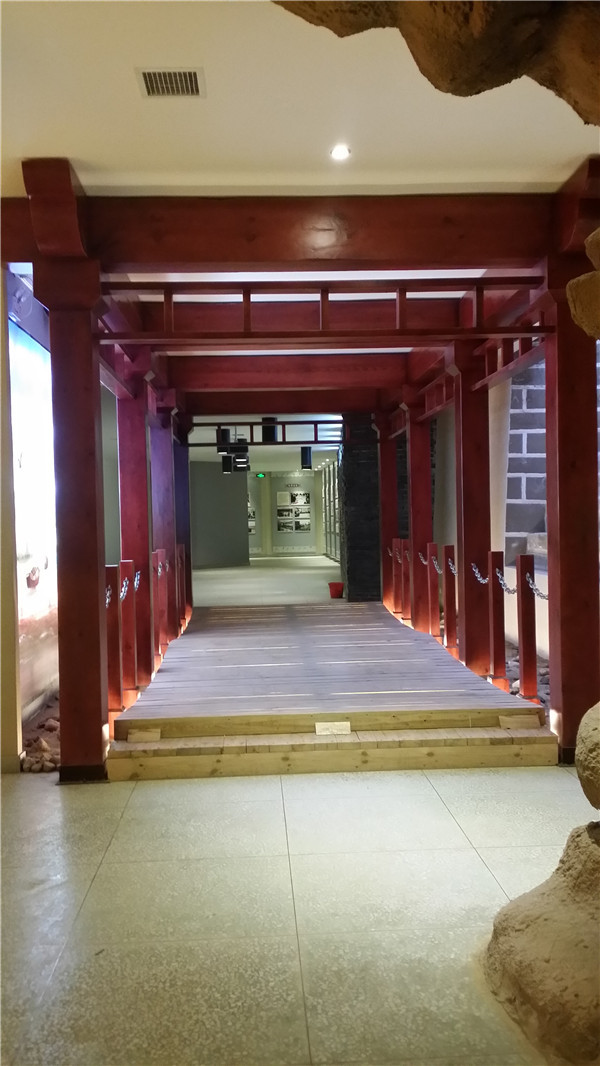
The Fifth Exhibition Area: Cultural Protection
Pujin Bridge is the earliest and most famous floating bridge on the Yellow River. It was rebuilt in Kaiyuan period in the Tang Dynasty. Later, due to the elevating of the channels of the Yellow River, the cultural relics such as the ground anchors and iron ox in either ends of the bridge submerged into the river hundreds of years ago. In 1991 and 1999, under the approval of the National Cultural Heritage Administration, the Shanxi Provincial Archaeological Institute conducted two scientific excavations on the Pujindu site, which unveiled the historic site of the ferry and the stratigraphic situation around the iron ox. In the excavation, based on careful and rigorous analysis and judgment of cultural layers of different eras strictly following the requirements of scientific excavation, respective characteristics of different eras were revealed and features of cultures of each era were confirmed. The excavation of the Pujindu site uncovered the historical fact of the iron ox as the anchors of the Pujin floating bridge, proving and reproducing the brilliant technical level and smelting and casting skills level in the Tang Dynasty.
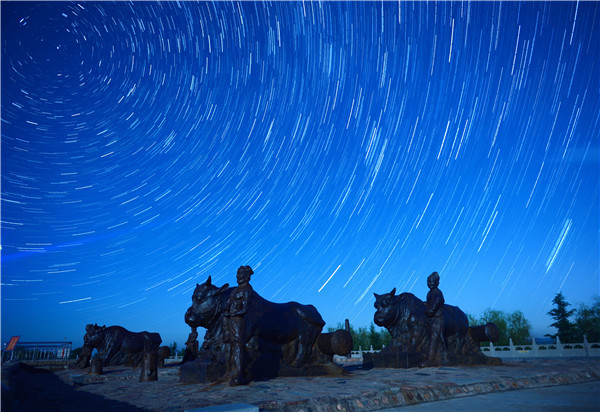
【Pavilions】
Huai Bing Pavilion
Huai Bing, the famous monk from Zhending (now Zhengding, Hebei) in the Song Dynasty, was born to be intelligent, quick-minded, and talented. According to the Biography of Folk Medicines in the History of Song Dynasty, he was praised as someone born with outstanding intelligence that cannot be obtained through learning. In the summer of the second year of the Zhiping Period (1065 A.D.), the Yellow River Basin was flooded with heavy rain, which caused the river to rise and flood the imperial palaces in the capital of Kaifeng. The Pujin Bridge, outside the West Gate, Hezhong Prefecture, was deeply influenced. The torrent was raging, the river banks were broken, the boats were beaten, the chains and the iron ox were dragged into the river, and the floating bridge was tore apart. After the water receded, the court recruited people to salvage the iron ox in order to restore the bridge. Finding nothing in a few months, people felt powerless and frustrated. Huai Bing the monk from Zhending, traveling in that area, enlisted himself to saLüage the iron ox. Two big boats filled with earth were connected with a thick trunk (the principle of leverage), to which the iron ox were tied with chains. Then the earth was gradually dumped out and the iron ox floated up with the boats. Zhang Tao, chief officer of Transportation heard about that Huai Bing got the iron ox with great ideas. He reported to the court, and the emperor bestowed Huai Bing with the purple clothes (Kasaya). Huai Bing was an outstanding engineer at that time. He also repaired the 13-storey wood Pogada in Zhending and the Zhaozhou Stone Arch Bridge with amazing wisdom and brilliant ideas.
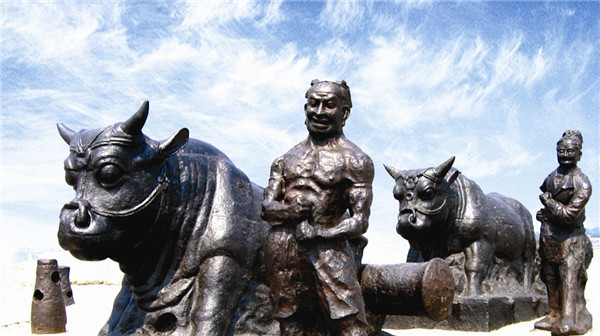
Minghuang Pavilion (Emperor Ming Pavilion)
Emperor Ming of Tang was Emperor Xuanzong of Tang, Li Longji. During his reign, he made great efforts to the country governance, martial achievements, political clarity, economic prosperity, and national prestige, and created the “Kai Yuan Flourishing Age”. The world-famous Pujin Bridge is a magnificent feat of this period. In the ninth year of Kaiyuan (721 A.D.), the emperor claimed the reconstruction of the Pujin Bridge, and Zhangshuo, chief of the Ministry of War in feudal China was ordered to conduct the construction. Therefore, the master craftsman led the hundred workers to work. They tied the chains into the cables and melted the iron into the ox pattern, which are respectively used to navigate the ships and tie the cables. They dispersed and decorated the boats like a lasting rainbow along with the cable which are like dancing dragon. With eight iron ox defending on the two sides of Pujindu Ferry, the bridge was laid through the places of Qin and Jin. The Pujin Bridge then became the artery of transportation to connect the capital city to its environs and the northern border towns. After the completion of the Pujin Bridge, Zhang shuo wrote an ode and curved it on stone. The “Ode to the Pujin Bridge” was written at great length with skill and gift. In the eleventh year of Kaiyuan (723 A.D.), the emperor made an inspection tour in northern capital, and resided in Puzhou (now Yongji) in the way back. With viewing the golden decoration of birds on the dragon chariot,solemn guarding squad with flags and weapons, the emperor was in the mood of writing a poem named Cross the River from Pujindu Ferry in the Mornning. In this poem, he wrote, the dragon carried the boat of the emperor to cross the river, and the bridge led a way to the heaven ferry. He gave a description of an enlightened emperor who inspected the plans of the strategic pass of important town, where the sky was full of purple clouds of prosperity.
Wuning Pavilion
Wuning was the posthumous title of general Xu Da in Ming Dynasty. Xu Da, born with great ambition, was tall of statue and high cheekbones. He living a life of army service, taking the lead to the soldiers, and ranking the first meritorious hero in Ming Dynasty, was praised as the "Great Wall" against enemies. According to The Biography of Xuda in the History of the Ming Dynasty, in the second year of Hongwu (1369 A.D.), the emperor ordered Xu Da and Chang Yuchun to enter Shanxi. When the enemies not well prepared, they directly launched an assault in Taiyuan, and suppressed the whole Shanxi. Later, the army gathered in Puzhou, and planned to suppress the Guanzhong area westward. At that time, the Pujin Bridge had been abandoned and it was difficult for the army to cross the river fastly. Xu Da then ordered Kang Maocai, the magistrate of Guanshan to design and build the floating bridge. People in Puzhou took no trouble to construct the bridge. It didn't take long for the bridge to be completed. Xu Da led the troops to drive straight into important northwestern military towns in succession, such as Fengyuan (now Xi'an, Shaanxi), Qingyang (now Qingyang, Shaanxi), Qinzhou (now Tianshui, Gansu), Lanzhou (now Lanzhou, Gansu), and achieved the final unification of the Ming Dynasty. As a most important military place in Guanzhong, Qin and Jin areas, the bridge had been 148 years since the destruction of the Pujin Bridge the Jinyuan War. Over the years, the bridge once again took on the sacred mission of turning a deep chasm into a thoroughfare with the irreplaceable and extraordinary posture.
Jinhou Pavilion
Jinhou, with the same mother of King Jing of Qin in the Spring and Autumn Period, was the younger brother, namely the second son of Qin, with a given name of Zhen. According to The Discipline of Qin in Records of the Grand Historian of China, in the 34th year under the reign of the King Jing of Qin (541 B.C.), the second son was favored and rich in wealth so that someone framed him up. The son was worried about suspicion from the king and followed his mother’s advice to take valuable things, flee with thousands of vehicles and built boats on the river bank for going to Jin for a shelter. King Ping of Jin asked that why would he run as far as owing so much wealth. The second son responded that he was afraid of being killed because the King of Qin was brutal. He would not go back until someone was acclaimed as the new king. Then, the second son was granted as the Jinhou, the Duke of Jin. According to Shijizhengyi, the Study on the Records, written by Zhangshoujie in Tang Dynasty, the bridge, east to the Linjin county, Tongzhou city, cross which to Puzhou, was the Puzhou Bridge. Confucius said that as the head of the state, King Jing of Qin failed to provide guidance, as a result of which, the second son of Qin fled to Jin to be granted as the Duke of Jin. The boats he built did contribution to the hegemony of the King of Ping of Jin. Since then, the time of being never in contact with each other for Qin and Jin had ended. Pujin Bridge, a veritable achievement as an advanced achievement in the evolution of human transportation, made a name of the first bridge on the Yellow River.
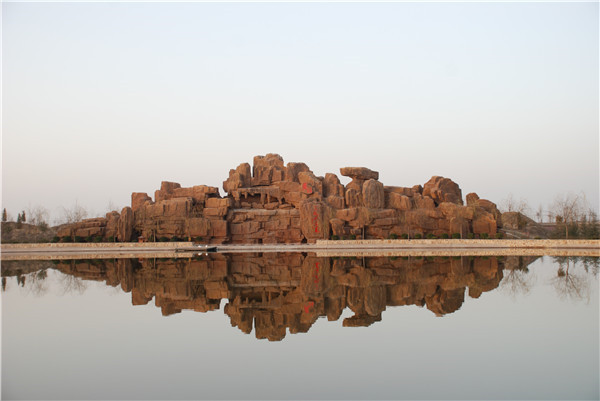
Address:
Xixiang Village, Puzhou Town, Yongji, Yuncheng City, Shanxi Province
Opening hours
Summer: 8:00 a.m. -6:30 p.m. Winter: 8:00 a.m.-5:30 p.m.
Ticket Price:
Full-price ticket: 60 yuan/person,
Half-price ticket: 30 yuan/person
Tour guide service:
40 yuan per time (less than 16 people)
50 yuan per time (more than 16 people)
Transportation guidance:
Self-driving route
From Xi’an: Follow the Lianhuo Expressway to the east to the Qindong Station, enter the Shanxi province via the Fenglingdu Yellow River Bridge, then follow the Yunfeng Expressway to the west of Yongji, and then follow the tourist road westbound for 5 kilometers to reach the scenic spot.
From Zhengzhou:Follow the Lianhuo Expressway to the east to the Qindong Station, enter the Shanxi via the Fenglingdu Yellow River Bridge, then follow the Yunfeng Expressway to the west of Yongji, and then follow the tourist road westbound for 5 kilometers to reach the scenic spot.
From Taiyuan: Follow the Dayun Expressway to the south to Yongji West, and then follow the tourist road westbound for 5 kilometers to reach the scenic spot.
Hotline:
0359——8485160
Tour tips:
1. Please pay attention to personal safety.
2. No smoking in the demonstration area.
3. Avoid drowning

